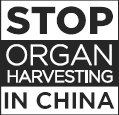NATHAN VANDERKLIPPE
BEIJING – The Globe and Mail | Wednesday, Jun. 22
Chinese hospitals are conducting far more organ-transplant operations than the country has officially acknowledged, according to a lengthy new report that raises troubling questions about the source of human body parts used to heal China’s elite and the foreigners who pay high prices to receive new kidneys and livers.
Although much of China’s transplant industry is shrouded in secrecy, officials have said 146 approved hospitals transplanted 7,785 organs last year.
But a team of researchers, including two prominent Canadian human-rights activists, has sifted through a huge number of hospital records, accounts from doctors, press clippings and public statements to tabulate numbers of Chinese transplant-centre beds and doctors ‘“ and from that has calculated how many transplants take place.
By their count, Chinese surgeons are transplanting between 60,000 and 100,000 organs a year, a number they say far surpasses the volume of kidneys, livers and hearts available from voluntary donors.
One hospital alone, the Oriental Organ Transplant Centre at the Tianjin First Centre Hospital, is probably doing more than 6,000 transplants a year, they estimate.
Authors David Matas, David Kilgour and Ethan Gutmann have over the past decade published evidence that China is using Falun Gong practitioners, Uyghur Muslims, Tibetans and Christians as a pool for human-tissue extraction.
Their new report is a joint 798-page document that is being released as a U.S. congressional committee convenes a hearing on Thursday on organ harvesting.
They accuse China of plundering the bodies of prisoners of conscience to meet the demand.
“What we’re trying to do is get the government, the party state in Beijing, to stop killing their own people for their organs,” David Kilgour, a human-rights activist and former Canadian MP, said. “An industrial-scale crime against humanity is going on in China.”
China’s organ-transplant industry is deeply controversial, and Chinese doctors and government officials have fiercely disputed research by the three men. Last week, China lashed out at “groundless accusations” in a resolution passed by the U.S. Congress that “condemns the practice of state-sanctioned forced organ harvesting in the People’s Republic of China,” and specifically calls out “the killing of religious or political prisoners for the purpose of selling their organs.”
Mr. Matas and Mr. Gutmann are both witnesses at the congressional hearing.
For their new report, they and a team of researchers surveyed hundreds of hospitals in China, amassing evidence showing that, in addition to 146 approved hospitals, many unapproved clinics were transplanting organs.
The gamut of body parts on offer in China is breathtaking: livers, kidneys, hearts, spleens, hands, breasts, arms, hearts, corneas, intestines, pancreases, thyroids, stem cells, hair and bone marrow.
Hospitals with transplant departments advertise five-star services, swimming pools, sky gardens and award-winning architecture. One boasts a $1.3-million grand piano.
“China is not the only country with organ-transplant abuse. There’s a huge demand for organs, and huge money to be made,” Mr. Matas, a Winnipeg refugee and human-rights lawyer, said. “What’s different about China is it’s institutionalized, it’s state-run, it’s party-directed. It’s not a few criminals in back alleys trying to make a fast buck.”
He estimates that 80 per cent of the organs used in China come from prisoners of conscience, although “in the presence of total cover-up and the absence of total access to data, that’s just an estimate.”
China has acknowledged the use of prisoner organs in the past, but said the practice stopped last year.
In subsequent Chinese media reports, officials said prisoners are citizens who can make “voluntary” donations. Critics scoff at the idea that someone behind bars can make a free decision.
Those inside the system argue that it is much reformed and now relies on voluntary donations ‘“ particularly from families who decide, for payment, to allow surgeons to extract organs from brain-dead relatives.
“We now have a significant source of lungs from brain-dead patients,” said Chen Jingyu, deputy director at Wuxi People’s Hospital and one of China’s top lung-transplant specialists.
China does not yet harvest as many organs from individual donors as other countries. But Dr. Chen, who studied at Toronto General Hospital, said the country’s modern transplant system does not use prisoners and has come “completely into the sunshine.” As proof, he sent a picture of an organ-verification document, including the donor’s national ID card number, which he partly redacted.
He disputed the idea that official transplant statistics are understated. Higher estimates, such as those done by the report’s authors, “have no basis and are absolutely wrong,” he said in an interview this week.
Then he had to go. It was 8 p.m., and he had another lung transplant to do.
Other experts also have defended China. Jeremy Chapman, an Australian transplant surgeon and former president of the Transplantation Society, which is based in Montreal, called the estimates in the new report “pure imagination piled upon political intent.”
He questioned whether China has sufficient transplant surgeons to carry out tens of thousands of operations. “Pharma companies in China have been providing nowhere near enough medication for this number, and felt the downturn with the reduction in transplants as the executed prisoner organs dried up,” he said.
Dr. Chapman does not dispute China’s high demand. Organ transplants are life-saving operations, and sick Chinese need as many as 300,000 transplants a year. But there are places to legitimately source organs, he said: “They have 60,000 road deaths.”
He also questioned the underpinnings of the new report. “Look at the sources of those documents. They are all Falun Gong,” he said.
Many of the report’s researchers, a network of Chinese-speaking volunteers, are Falun Gong practitioners. The primary authors ‘“ including the Nobel-nominated Mr. Kilgour and Mr. Matas ‘“ do not adhere to Falun Gong.
They heavily document their work, with 2,360 footnotes. Of the small number verified by The Globe and Mail, each matched with the report contents, although some point to unattributed Falun Gong research.
The authors contend that no one has more reason to pry back official secrecy than those persecuted. “The only places reporting on the Holocaust during the Holocaust in ’43 and ’44 were the Jewish papers. And they were discredited for exactly that reason,” Mr. Gutmann said.
Falun Gong practitioners who have escaped China have also recounted frequent medical examinations that led to no treatment. They believe that they were being profiled for organ-donation compatibility.
Xu Menglan, a refugee who arrived in the United States late last year, said her blood was tested an “uncountable” number of times during several stays in Chinese detention.
In 2002, a senior Beijing police officer “directly threatened to ‘˜take your organs’ ” if she refused to recant Falun Gong, she said in an interview. The following year, the director of a labour re-education camp in Harbin, in northern China, also told her: “If you keep this up, I will take your organs.”
In prison, she said, people simply vanished. “Based on my observations and my analysis, they were all killed for their organs. Some are still missing after so many years,” she said.
For the researchers behind the new report, further proof lies in wait times, which in China are dramatically shorter than in other countries, suggesting a large pool of donors from which doctors can readily choose.
Although price lists are largely kept secret, the researchers found evidence that foreigners are paying six-figure sums for transplants. Only a few places, including Taiwan, Israel and Spain, have created legal barriers to such organ tourism.
The researchers also collated evidence of statistical manipulation that points to deliberate underreporting of Chinese transplant numbers.
Take the Tianjin organ centre. On its Chinese-language website, it says it has 120 beds and has completed 5,500 liver transplants from 1994 to 2015. On its English website, it claims 200 beds and 3,300 liver replacements until 2009, suggesting a recent annual rate of 366 a year, or no more than three a bed each year.
This contrasts with a biography on the Tianjin government website that notes the centre’s director, Shen Zhongyang, “has led his team to complete nearly 10,000 liver transplants.” And it contrasts with a 2006 Chinese academic journal article that reports 700 transplant beds at the hospital. If that number is true, the transplant centre that calls itself Asia’s busiest has two beds for every one procedure it claims to complete every year.
The report estimates that the real tally in Tianjin lies between 6,000 and 10,000. The uncertainty comes in part from the need to estimate workload for doctors and hospital beds.
Using the same methods nationwide, the new report estimates 60,000 to 100,000 transplants across China each year.
Where do those organs come from?
Car crashes, for example, present difficulties for organ transplants, since medical teams often cannot work quickly enough to extract viable tissue. In the United States, where 38,500 people died on the roads last year, “blunt injury” deaths made up only 1,853 organ donors, fewer than 5 per cent.
China’s own statistics show only 2,766 voluntary organ donations last year, although doctors extracted 7,758 organs, the National Health and Family Planning Commission said. That number almost exactly matches the official Chinese transplant tally ‘“ but remains a vast distance from estimates in the tens of thousands.
“It’s inconceivable that any of these, other than an increasingly tiny fraction, could have been obtained by voluntary donors,” said Maria Fiatarone Singh, a University of Sydney geriatrician who serves on the medical advisory board of Doctors Against Forced Organ Harvesting.
“There’s nowhere you can get even close to the number of transplants that are going on based on any kind of source that you could name ‘“ other than prisoners of conscience.”

